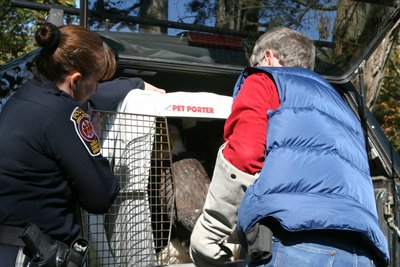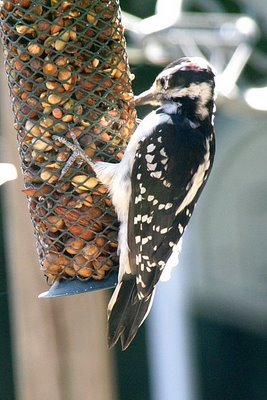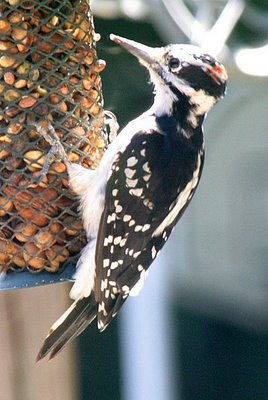 the seven tundra swans we saw at Accotink Bay Wildlife Refuge, Ft. Belvoir, VA.
the seven tundra swans we saw at Accotink Bay Wildlife Refuge, Ft. Belvoir, VA. 
I'm a birder in Virginia, having way too much fun! This is my birder's journal. I welcome comments and corrections to my bird identifications. I consider this a kind of online "photo lifelist" and I'll add photos taken in the past as I turn them up. Don't forget to go through previous months! Clicking on any photo will in most cases call up a larger version. To leave a comment on any entry, just click on the "0 comments" link!






 A reporter asked Ed if the animals appear to be grateful for the help they're given. With a wry laugh, Ed said "No, and that's a good thing. They're wild and we want them to stay wild."
A reporter asked Ed if the animals appear to be grateful for the help they're given. With a wry laugh, Ed said "No, and that's a good thing. They're wild and we want them to stay wild." He donned his heavily padded leather gloves and carefully removed the eagle from the carrier. A Fairfax County, VA police officer involved in the initial rescue helped to remove the white bumpers protecting the wing
He donned his heavily padded leather gloves and carefully removed the eagle from the carrier. A Fairfax County, VA police officer involved in the initial rescue helped to remove the white bumpers protecting the wing  joints. The eagle did no
joints. The eagle did no t appear to be grateful...
t appear to be grateful...
 The wing bumpers removed, Ed prepares to release the eagle, who seems very eager to be free. "I'm going to hold the eagle as I answer a few questions, and then I'll warn you before I free the eagle. If all works well, she'll fly away. However, I should warn you, if you see an eruption of red fluid that looks like my blood, I'll be releasing her early." (Nervous laughter from crowd.) Note reaction of police officer to the bird's struggles.
The wing bumpers removed, Ed prepares to release the eagle, who seems very eager to be free. "I'm going to hold the eagle as I answer a few questions, and then I'll warn you before I free the eagle. If all works well, she'll fly away. However, I should warn you, if you see an eruption of red fluid that looks like my blood, I'll be releasing her early." (Nervous laughter from crowd.) Note reaction of police officer to the bird's struggles.




 We were watching this fish and snake literally locked in mortal combat for a good while before they suddenly got quite close to shore. This was the first pic I took, not quite sharp, but they were frozen like this for several seconds.
We were watching this fish and snake literally locked in mortal combat for a good while before they suddenly got quite close to shore. This was the first pic I took, not quite sharp, but they were frozen like this for several seconds.
 A series of pictures of the Hairy Woodpecker that visited our feeder this morning.
A series of pictures of the Hairy Woodpecker that visited our feeder this morning. 



